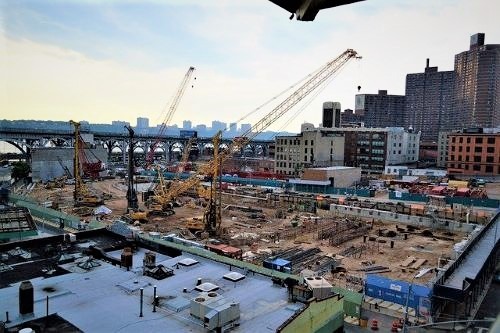Key insights on Biofertilizers: Making every molecule count

03TH February 2022
Franck Boher has 25 years of experience in Agro-agri industries (Groupe Roullier, Tessenderlo Group, Fibrant) which allowed him to develop an in-depth knowledge of the sector, which he shares with us today. Launched a year ago, his company Upgraid focuses on developing projects and solutions for sustainable agriculture and Agro circular economy. His most recent position prior to launching Upgraid was as Business Unit Director at Fibrant, the world’s leading producer of Caprolactam and Ammonium Sulfate, serving automotive, textile and agricultural industries.
Below are some key insights from Franck regarding Biofertilizers, its impact and what the future holds.

What are the effects of fertilizers on the environment?
The entire fertilizer value chain stands out as a priority to reach global sustainability goals because each segment has a significant impact on the environment, i.e. from raw materials sourcing to manufacturing process, supply chain organization and fertilizer application.
Chemical fertilizers, also known as conventional fertilizers, involve heavy-duty mining activities and energy-intensive production processes presenting substantial CO2 and GHG emissions. The prospects of an EU carbon tax policy, led all blue chip leaders of the fertilizer production sector to announce plans to cut emissions per ton produced, by 15% to as much as 40%. This goal is expected to be met by relying on low emission feedstocks like blue or green ammonia, carbon capture units and various process innovations.
The industrial model of the sector, based on gigantic factories located close to petrochemical or mining activities and exporting to remote markets, makes the supply chain segment of the fertilizer industry – a big contributor of emissions and pollution linked with logistics and storage as well.
However, it is the fertilizer application phase that triggers emissions, nutrient losses, soils exhaustion and pollution which, at the current level, are seen as hardly compatible with a sustainable agriculture model. A glaring example is summarized in the fact that each ton of urea applied (a nitrogen fertilizer best seller) will release 650 kg of CO2 in the atmosphere through hydrolysis. From a sustainability perspective, importing urea is like importing CO2 emissions.
In terms of agricultural practices, applying increased volumes of fertilizer has long been the easiest solution to obtain optimal crop yields despite exhausted soil life. Recent expert reports reckon that an average 24% of conventional fertilizer units applied – and in some exhausted soil up to 72% – are being lost into volatilization, leaching (nitrogen) and soil immobilization (phosphate), often with a devastating pollution impact on water ecosystems.
Source : From farm-to-fork, The European Green Deal

Under many of these aspects, biofertilizers may appear as the sustainable alternative to intensive fertilizing practices that leverage conventional chemical fertilizers.
What are the advantages and disadvantages of Biofertilizers?
Biofertilizers encompass 2 main categories of fertilizing products :
- organic fertilizers extracted from various biomass sources, mainly animal manure, water treatment systems and by-products of the agro-food and agrofeed industry; an example is the processing of animal blood from slaughterhouses into blood meal pellets, an interesting nitrogen biofertilizer with 13.5 units of nitrogen per ton,
- natural fertilizers, which are naturally-occuring minerals obtained through mechanical extraction and transformation without chemical synthesis. Rock phosphate, kieserite, and some potassium sulphate sources are good examples of this.
Both sources have been positioned as approved solutions for organic farming : a set of norms and labels, products and agricultural practices aimed at providing the final customer with the relative guarantee that one could stay immune to food contaminations by unwanted chemical substances.
As this organic fertilizers framework gradually becomes a level-playing field internationally – though often subject to fraudulent claims – relevant producers sell their bio-fertilizing nutrients from 1.3 to 12 times the price of equivalent conventional fertilizer nutrients. A key advantage in terms of revenue model.
The main drawback of biofertilizers is their relatively low nutrient content versus high-nitrogen or high-phosphate conventional fertilizers, which makes them pound-for-pound costly to haul and costly to apply, and agronomically not the weapon of choice on short cycle crops requiring fast-acting nutrients.
The lack of availability in volumes is another point which restricts biofertilizers to be used for high value crops like vegetables and orchards, which can afford it and value the ”organic” claim. The fertilizer industry competes with higher valorization streams like the feed, petfood, food and pharma industries, which extract high value active ingredients and deplete proteins and enzymes from the substrate. We will discuss the impact of scarcity on the needs of the fertilizer industry in detail ahead.
How do Biofertilizers fit into the circular economy?
Organic biofertilizer facilities are now ticking the boxes of a new set of advantages, as they become the epicentre of new regulatory incentives like the farm-to-fork framework in the EU and similar sustainability programmes in the US, UK and even countries like Japan or South Korea. Being mostly from biomass origin, they stand for renewable sources, low emissions and low energy consumption, locally sourced and a good example of by-products upcycling.
Biofertilizer production units often integrate biogas production which can make the all facility energy and emissions-neutral by some standards, although solutions for the biomass digestate have to be properly thought for from the conception phase.
This, if well-documented, makes investment projects in this field eligible for a variety of public subsidies, investment incentives and grants of construction permits whereas conventional fertilizer plants are gradually kicked away from cities and sea shores as persona non grata.
Logically, biofertilizers score high on the ESG scale which triggers good access to financial markets while conventional fertilizer businesses may find it hard to stay away from ESG bans in the future.
Being considered an environment-friendly business with high circularity potential, comes with perks that significantly better the ROI and company image, which in turn makes it a good investment project even for companies not specialized in fertilizers, but looking for opportunities to generate more revenues with their organic by-products or aiming towards environment neutrality to comply with Board requirements.
Is the stock of Biofertilizers able to meet the needs of the industry? Can we produce enough?
As mentioned earlier, biofertilizer resources are scarce and often preempted by higher value industries. Though quite attractive, this would be bound to limit the growth potential of the biofertilizers sector, if it wasn’t evolving towards the more lucrative pharma model of active ingredients extraction to compete on more equal terms for the biomass resources with food and feed industries.
As some key players in the fertilizer sector learn to valorize biomass beyond fertilizing units and switch their business and revenue model from intensive soil fertilisation products to optimized precision plant nutrition systems, biofertilizers become the door opener product to even more rewarding markets like biostimulants, plant growth promoters, plant immune system promoters, plant and soil testing.
For the leading players in the biofertilizers industry, each dollar spent in acquiring the biomass resources, generates more than a hundred dollars of revenues in products and services. Even when it comes to biomass and by-products, as a leading group in the fertilizer sector puts it : “every molecule counts” is the new focus of the biofertilizer industry.


